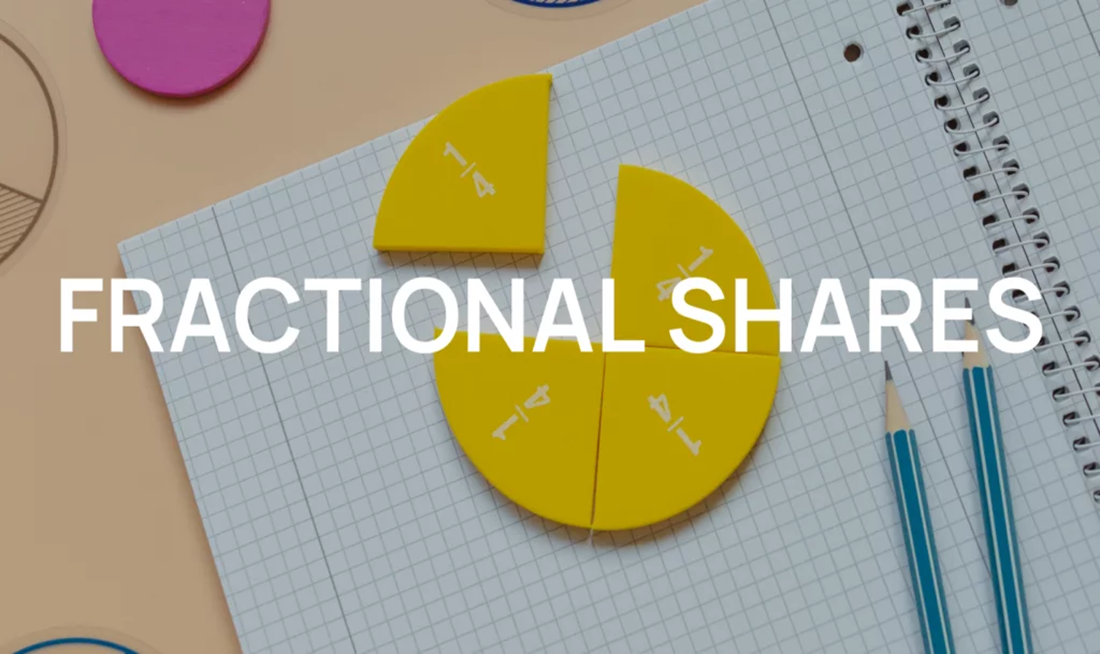Fractional Shares Explained and Why They’re a Smart Move
Investing in shares of leading companies such as Amazon or Tesla can often be prohibitive due to the high cost per share, leaving many aspiring investors feeling excluded from the stock market. However, in 2025, the ability to purchase fractional shares has become increasingly prevalent, offering a solution that enhances accessibility to investment opportunities.
Fractional shares enable individuals to acquire a portion of a stock rather than a full share, thereby democratizing investment and allowing broader participation in financial markets. As more brokerage firms adopt this model, it is transforming how investors construct portfolios, diversify holdings, and engage with the market—even with limited capital.
This discussion will provide a comprehensive overview of fractional shares, including their definition, operational mechanisms, and strategic advantages for both novice and experienced investors in 2025. Additionally, guidance will be provided on the process of purchasing fractional shares, the most suitable platforms for acquiring them, as well as key benefits and potential drawbacks to consider.
What Are Fractional Shares?
Fractional shares are exactly what they sound like—fractions of a whole stock. Instead of having to buy an entire share of a company like Apple or Google, you can buy just a slice of it. For instance, if a single share costs $1,000, and you only have $100 to invest, you can buy 0.1 of a share. This lets you invest in high-performing, high-priced companies without needing a large sum of money upfront.
This concept isn’t entirely new—fractional shares have existed in dividend reinvestment plans (DRIPs) for decades—but they’ve become far more accessible in recent years. Thanks to advancements in fintech and the rise of commission-free trading platforms, investors can now purchase fractional shares with just a few taps on their phones. Platforms like Robinhood, Fidelity, and Schwab have made this easier than ever.
In 2025, fractional shares represent a democratization of investing. They allow individuals to participate in the market regardless of their budget. As inflation rises and economic uncertainty grows, more investors are looking for flexible and affordable ways to protect and grow their wealth. Fractional shares fit perfectly into this financial landscape.
Why Fractional Shares Make Sense in 2025
The financial world in 2025 is shaped by rapid innovation, inflation concerns, and a continued push for economic inclusion. People are looking for smarter ways to make their money work for them, and traditional barriers to entry are being challenged. One of those barriers? The cost of individual stocks.
With high-profile companies often trading at hundreds or even thousands of dollars per share, many investors—especially younger ones—are priced out. Fractional shares eliminate that problem. Instead of saving for weeks to afford one share of a company like Nvidia, you can start investing immediately with as little as $5 or $10.
This flexibility allows for better diversification, even with limited funds. Rather than putting all your money into one stock, you can spread your investment across multiple sectors or companies. In a volatile market, diversification is key to minimizing risk and maximizing long-term gains.
In addition, as financial education becomes more widespread—especially through platforms like TikTok, YouTube, and investing apps—more people are learning the value of starting early. Fractional shares offer the ideal entry point for beginners who want to build wealth over time without needing thousands of dollars to begin.
How to Buy Fractional Shares
Buying fractional shares is easier than ever in 2025, thanks to intuitive apps and zero-commission trading platforms. To get started, all you need is a brokerage account that supports fractional investing. Popular platforms offering this service include Robinhood, Fidelity, Charles Schwab, SoFi, and Public.
Once you’ve chosen your platform and created your account, you can fund it with any amount of money you’re comfortable investing. Then, search for the stock you want to buy. If the platform supports fractional shares for that stock, you’ll have the option to specify the dollar amount you’d like to invest instead of the number of shares.
For example, let’s say you want to invest $50 in Amazon, which is currently trading at $3,000 per share. Instead of needing the full $3,000, your $50 will buy you approximately 0.0166 shares. The process is simple, and most apps provide real-time tracking, portfolio breakdowns, and educational tools to help you make informed decisions.
Many brokerages also allow you to set up automatic recurring investments, which is a great way to build your portfolio over time through dollar-cost averaging. This technique helps reduce the impact of short-term market fluctuations and encourages consistent investing behavior.
Benefits of Investing in Fractional Shares
One of the biggest advantages of fractional shares is accessibility. Whether you’re a student, a young professional, or someone getting back on their feet financially, fractional shares allow you to start building wealth on your own terms. You don’t need to wait until you’ve saved hundreds or thousands of dollars—you can start today.
Another major benefit is the ability to diversify. Instead of putting all your funds into one or two affordable stocks, you can build a diversified portfolio with small investments across multiple companies. This reduces risk and increases your chances of long-term success, especially when investing in different industries and market sectors.
Fractional shares are also ideal for goal-based investing. If you have a target amount to invest monthly or are saving for a future purchase, being able to invest precise amounts helps you stay consistent. You’re not limited by stock prices—you’re empowered by your budget.
Finally, they’re perfect for educational purposes. If you’re just starting to learn about investing, fractional shares offer a low-risk way to experiment, observe market behavior, and understand the principles of investing before committing larger sums.
Drawbacks and Things to Consider
Despite all the benefits, fractional shares do have a few limitations. First, not all brokerages offer them, and not every stock may be available in fractional form. You’ll need to check with your chosen platform to see which stocks qualify and what the minimum investment amounts are.
Liquidity can also be a factor. While selling full shares is straightforward, fractional shares may not be as easy to liquidate quickly, especially in highly volatile or less popular stocks. This is generally not a problem with blue-chip stocks, but it’s something to be aware of if you’re planning to actively trade.
Another consideration is ownership rights. With fractional shares, you typically don’t have voting rights that come with owning full shares. This may not matter to most retail investors, but for those who care about influencing a company’s direction through shareholder votes, it’s something to keep in mind.
Lastly, taxes and recordkeeping can become a bit more complex, especially if you’re buying and selling small amounts regularly. Make sure to track your investments and consult a financial advisor or use tax software to stay compliant during tax season.
Fractional Shares vs. Traditional Investing
When compared to traditional investing, fractional shares offer a more flexible, modern approach. In the past, investors often had to buy round lots (usually 100 shares) or pay high fees to own high-quality stocks. This locked many people out of the market and created a sense of exclusivity around investing.
Today, fractional investing levels the playing field. Instead of waiting for a stock to split or saving for months, you can buy into your favorite companies whenever you’re ready. This changes the psychology of investing—from being a daunting, once-in-a-while activity to a regular financial habit that feels manageable and empowering.
It also promotes better portfolio practices. Many traditional investors would pour large sums into a few affordable stocks, inadvertently taking on more risk. Fractional shares encourage smarter asset allocation by making it easy to diversify—even if you only have $100 to invest.
For long-term investors, the impact is significant. By consistently investing small amounts and reinvesting dividends, you benefit from compounding growth over time. As we discussed in our guide to investing strategies for beginners, building good habits early can lead to exponential returns in the long run.
Conclusion
In 2025, fractional shares have emerged as a transformative investment mechanism, enhancing accessibility to the stock market, promoting financial inclusivity across various income levels, and fostering disciplined investment habits. Whether an individual is new to investing with a modest amount or an experienced investor seeking efficient diversification, fractional shares provide a versatile and effective solution.
This discussion has explored the fundamental concepts of fractional shares, their operational framework, the platforms facilitating their acquisition, and the advantages and drawbacks associated with integrating them into an investment strategy. With a well-informed approach, investors can construct a diversified portfolio, achieve sustained financial growth, and proactively manage their financial future—beginning immediately.

